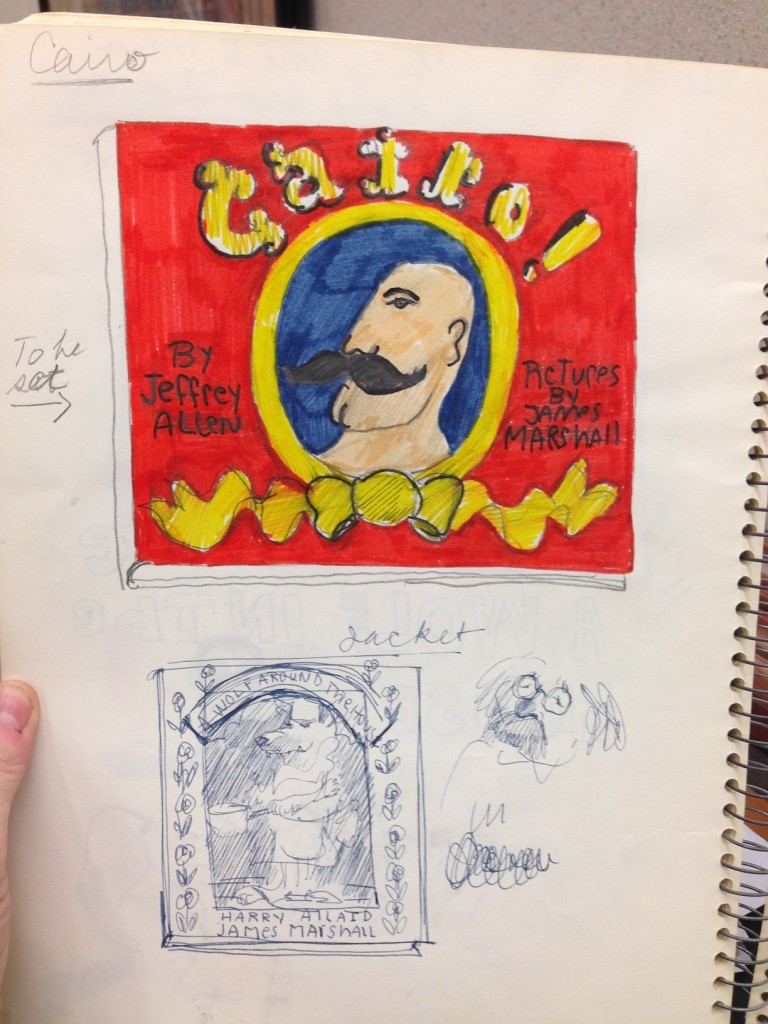By Julie Danielson
James Marshall (called “Jim” by friends and family) created some of children’s literature’s most iconic and beloved characters, including but certainly not limited to the substitute teacher everyone loves to hate, Viola Swamp, and George and Martha, two hippos who showed readers what a real friendship looks like. Since I am researching Jim’s life and work for a biography, I knew that visiting the James Marshall Papers in Archives and Special Collections at the University of Connecticut’s Northeast Children’s Literature Collection would be tremendously beneficial. In fact, Jim’s works and papers are also held in two other collections in this country (one in Mississippi and one in Minnesota), which I hope to visit one day, but I knew that visiting UConn’s Archives and Special Collections  would be especially insightful, since Jim made his home there in Mansfield Hollow, not far at all from the University. Indeed, I spent my evenings, as I wanted to maximize every possible moment during my days for exploring the collection, talking to people there in Connecticut who knew and loved Jim, including his partner William Gray, still living in the home they once shared.
would be especially insightful, since Jim made his home there in Mansfield Hollow, not far at all from the University. Indeed, I spent my evenings, as I wanted to maximize every possible moment during my days for exploring the collection, talking to people there in Connecticut who knew and loved Jim, including his partner William Gray, still living in the home they once shared.
The collection is vast and impressive, just what a biographer needs. I had five full days, thanks to the James Marshall Fellowship awarded to me, to explore the archives and see, up close, many pieces of original artwork, as well as a great deal of his sketchbooks. I saw manuscripts, sketches, storyboards, jacket studies, character studies, preliminary drawings, dummies, proofs, original art, and much more from many of Jim’s published works, including a handful of his early books — It’s So Nice to Have a Wolf Around the House, Bonzini! The Tattooed Man, Mary Alice, Operator Number 9, and more. To see sketches and art from his earlier books was thrilling, because I’m particularly fond of many of those titles. (Bonzini!, I learned in the sketchbooks, was originally titledCairo.) Also on hand in the collection are sketches and art from his more well-known books, as well as books published at the end of his career (he died in 1992), including the popular George and Martha books and Goldilocks and the Three Bears, which received a 1989 Caldecott Honor. Read more…
